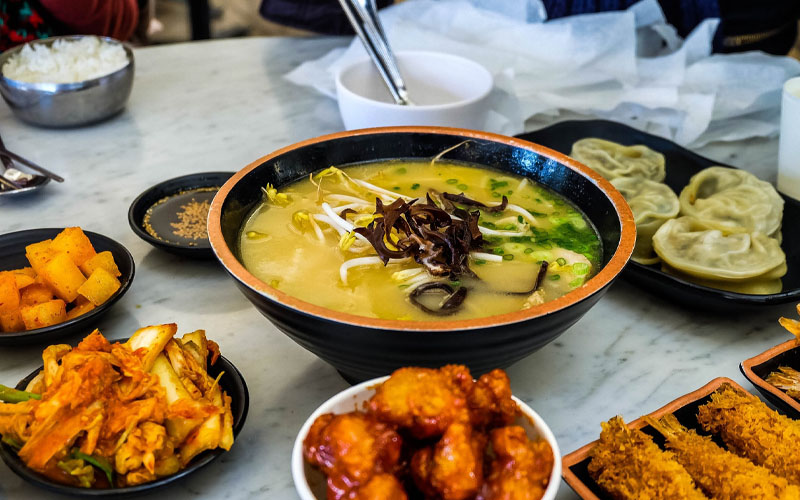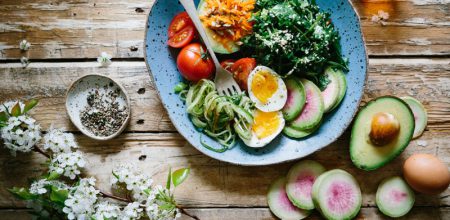Every food item contains some 20 Properties proportion of the Five basic elements (Space, Air, Fire, Water & Earth), with one or more of the elements being dominant. In turn, the three Doshas and seven tissue systems also have different proportions of the five basic elements with a dominance of certain elements in each.
So, according to the Ayurvedic Principle of ‘like increases & dislike decreases’, foods having the properties as a particular DOSHA and/ or tissue systems increase those properties. And when foods have opposite properties then it results in a decrease of those properties. These ‘properties’ (or Gunas in Sanskrit) are 20 in number and are distributed amongst the five basic Elements.

Ayurveda evaluates our diet based on the tastes and its effect on the doshas, as well as the following energetic qualities of the food:
- Temperature: cold or warm;
- Weight: light or heavy; and
- Moisture: dry or wet.
The ayurvedic approach treats what you are like right now, and takes it one day at a time, one season at a time. When you wish to bring balance into your digestion, look at what qualities and tastes dominate in your diet, and balance them with the opposite qualities.
AYURVEDA has a unique distinction of classifying food articles based on these 20 properties and uses food to nourish and/ or to bring about changes in the Doshas and the tissue systems.
These 20 Properties are classified in opposing pairs of 10 and are listed as:
- Heavy – Light
- Cold – Hot
- Unctuous – Dry
- Slow – Sharp
- Stable – Mobile
- Soft – Hard
- Slimy – Rough
- Viscous – Liquid
- Gross – Subtle
- Cloudy – Clear
Here are some examples of how the 20 Properties exhibit themselves in various Foods:
- Heavy – Cream, cheese, kidney beans.
- Light – Puffed rice, Popcorn.
- Cold – Mint, coconut water, water melon, rice.
- Hot – Peppers, nutmeg, turkey meat.
- Oily – Nuts, fats and oils, black lentil.
- Dry – Millet, rye, corn.
- Slow – Yogurt, red meat, condensed milk.
- Sharp – Onion, ginger, Garlic, Bell peppers, mustard greens.
- Stable – Ghee, wheat.
- Mobile – alcohol, sprouts.
- Soft – Puffed rice, Tapioca, pasta.
- Hard – Nuts, jack fruit.
- Slimy – okra, full cream yogurt.
- Rough – Most millets, broccoli, cauliflower, oats.
- Dense – Cream, potatoes.
- Liquid – all water based beverages, soups, milk.
- Gross – Roots and tubers, Dates, minerals.
- Subtle – Spices, saffron, oils
- Cloudy – Mayonnaise, butter, Sea food.
- Clear – Clarified butter milk, black eyed pea, bitters.






